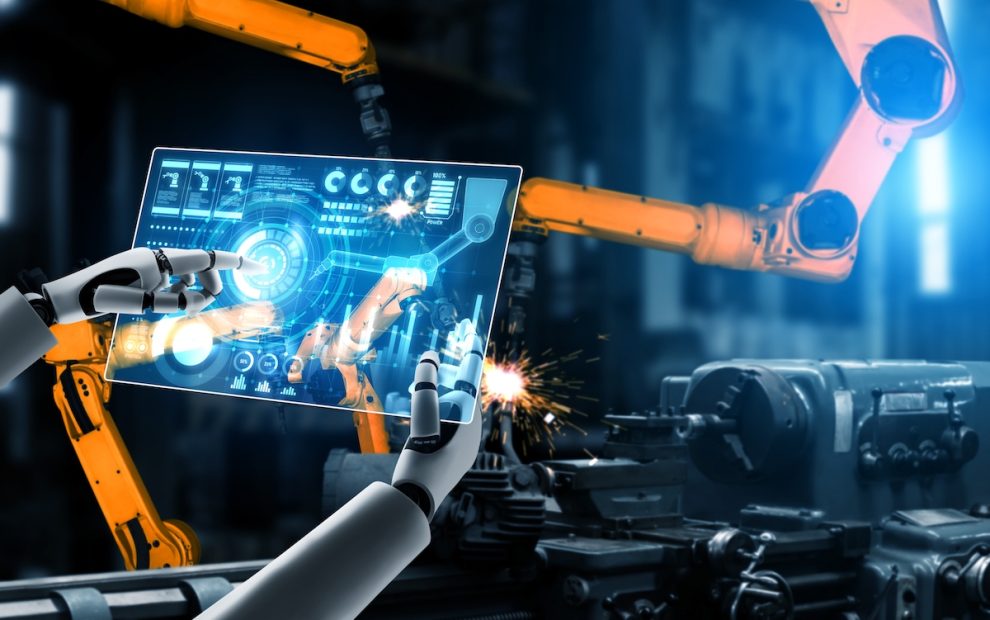The pulse of the production floor beats to the rhythmic hum of machinery, the coordinated ballet of workers, and the steady flow of raw materials morphing into finished products. But even the most harmonized manufacturing environment can benefit from a skilled conductor – one that can analyze data, identify friction points, and orchestrate improvements.
Enter Artificial Intelligence (AI), the high-tech maestro set to revolutionize manufacturing with its data-driven baton. By perpetually optimizing layouts, smoothing workflows, boosting quality control, and more – AI promises more vibrant and efficient manufacturing than ever before.
Discordant Notes in Traditional Manufacturing
First let’s examine some pain points plaguing legacy production environments:
- Inefficient factory layouts – Poor spacing of inventory and equipment leads to workflow congestion and bottlenecks.
- Manual processes – Relying solely on human precision results in quality inconsistencies and rework.
- Unoptimized production planning – Failing to sequence workflows smoothly creates capacity mismatches and idled assets.
This discord manifests as lower output, higher costs, and inability to meet customer demand. Issues like long lead times, high scrap levels, and frequent machine failures diminish productivity and competitiveness.
The Promise of AI Optimization
Here’s where AI steps in as the hero, serving as the maestro orchestrating improvements through data-based conduction. When properly implemented, AI can optimize:
1. Factory Layouts and Material Flows
By analyzing historical output volumes, peak production requirements, machine capabilities, and worker movement patterns – an AI system can suggest optimized rearrangements of inventory stations, equipment, and personnel to:
- Shorten travel paths for materials and employees
- Streamline flows between operating zones
- Balance capacities across production lines
- Enhance workplace ergonomics
The impact? Faster processing, reduced worker fatigue, and improved safety. AI choreographs spatial symmetry.
2. Production Scheduling and Coordination
Leveraging real-time data on order volumes, available resources, and equipment status – the AI platform can optimally sequence tasks by:
- Dynamically rerouting work to avoid bottlenecks
- Scheduling preventative maintenance during downtime
- Tuning staff levels to match volatile demand
Enabling seamless material flows, maximized uptime, and flexible capacity scaling – AI is the master scheduler.
3. Predictive Maintenance and Downtime Minimization
With sensors continuously gathering machine performance data, AI analytics can detect problems before they cause failures. This allows manufacturers to:
- Diagnose root causes of impending issues
- Coordinate preemptive repairs during planned outages
- Prepare necessary parts/crews in advance
Thus operational disruptions are avoided, driving productivity gains. AI delivers proactive maintenance through data-enabled foresight.
4. Intelligent Quality Inspection
Computer vision AI can be trained to catch defects with superhuman accuracy and speed. By deploying such systems along the production line to:
- Scan items as they are fabricated
- Flag subpar results for immediate correction
- Continuously improve detection capabilities
Manufacturers gain systematic quality control approaching near-perfect end products. AI oversees craftsmanship through its discerning gaze.
5. Demand Forecasting and Inventory Optimization
Finally, by processing historical output figures, upstream supply signals, and market trends – AI can predict consumer demand more precisely. This enables manufacturers to:
- Plan batch sizes and production runs based on future requirements
- Avoid overproduction and excess stockpiling
- Improve customer service levels via adequate supply
Essentially, AI serves as the visionary conductor predicting needs and ensuring sufficient orchestration.
The Fruits of an AI-Optimized Symphony
Deploying AI to direct improvements across inventory planning, quality control, and production flows unlocks tremendous benefits:
- Increased throughput from accelerated cycle times and less downtime
- Lower expenses by reducing waste and improvising assets
- Enhanced quality through automated inspection processes
- More agility from data-driven forecasting
The numbers showcase AI’s immense potential to resolve manufacturing challenges through data-powered harmony. Studies indicate implementing AI has delivered:
- 10-20% higher productivity levels
- Over 50% superior equipment utilization
- 20-50% lower maintenance overheads
- 10-25% expanded production capacity
These results highlight AI’s skill in conducting the manufacturing symphony through data-based optimization.
Humans: Still Vital Cogs in the AI Orchestra
With all this automation, one may worry if AI will replace human effort on production floors. In reality, AI is designed to augment workers by handling data-heavy tasks. This leaves the irreplaceable human strengths of contextual judgment, mechanical dexterity, creative problem solving, and interpersonal coordination intact.
The factory of the future will see AI digitally choreographing an empowered human workforce. Together both bring complementary abilities to hybrid teams – achieving peak performance in symphonic harmony.
The Future is AI-Conducted Manufacturing
Production environments involve endless moving parts interacting in complex ways. Traditionally managers relied solely on intuition and experience to coordinate these variables with mixed results.
Now AI provides the ability to optimize manufacturing on an entirely new level. By continuously analyzing metrics on asset utilization, inventory levels, product quality and more – AI can orchestrate improvements with the sophistication of a master conductor.
The future will witness AI leading the manufacturing symphony towards unprecedented harmony. A synchronized environment where machines and people collaborate so smoothly that abundant yet affordable goods flow to delighted customers. AI promises to make this sustainable dream into reality through its fluency in data.
















Add Comment